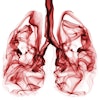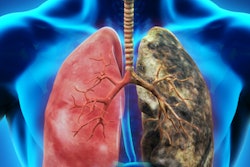
CT appears to be taking over for x-ray as a tool for the diagnosis of lung cancer in China, where imaging utilization rates have generally trended upward over the past decade -- most notably in underdeveloped regions of the country, according to an article published online February 8 in Thoracic Cancer.
Chest x-ray has long served as the primary imaging modality for the diagnosis of lung cancer in China, study co-author Dr. Ning Wu from Peking Union Medical College and colleagues wrote. However, technological advances in recent years have led to increased use of other imaging methods.
As part of an ongoing effort, Wu and colleagues investigated changes to the utilization rates of different imaging modalities for the diagnosis and staging of primary lung cancer in China. They specifically examined the imaging data of 7,184 lung cancer patients who were admitted to and received treatment at one of eight distinct tertiary hospitals between 2005 and 2014.
Over the 10-year period, they found that CT was the most commonly used imaging modality for lung cancer diagnosis. The CT utilization rate increased by 15.6 percentage points, compared with a drop of nearly 20 percentage points in x-ray usage. MRI utilization also more than doubled in the same time interval, although the total increase was only 1.2 percentage points.
Imaging utilization for lung cancer staging had a similar increase as well, for all modalities except abdominal ultrasound. The data revealed that bone scintigraphy took over for abdominal ultrasound as the most commonly used modality for staging.
| Lung cancer imaging utilization rates in China | ||
| Modality | 2005 | 2014 |
| Lung cancer diagnosis | ||
| Chest CT | 65.8% | 81.4% |
| Chest x-ray | 50.2% | 30.9% |
| Chest MRI | 0.7% | 2% |
| Lung cancer staging | ||
| Bone scintigraphy | 42.4% | 62.2% |
| Abdominal ultrasound | 83.3% | 59.9% |
| Neck ultrasound | 23% | 47.9% |
| Brain MRI | 8.7% | 40.7% |
| PET/CT | 0.7% | 9.3% |
| Bone MRI | 0.9% | 4.7% |
These changes were more pronounced in underdeveloped, or poorer, regions of China than they were in more developed, or richer, regions. Furthermore, x-ray and bone MRI were used more frequently in poorer regions of China, whereas CT, PET/CT, abdominal ultrasound, brain MRI, and bone scintigraphy were used more frequently in richer areas (p < 0.05).
The observed changes to imaging utilization rates stem from a combination of several different factors, including, potentially, the improvement of medical treatment in less developed areas, increased national health insurance coverage, and the emergence of advanced imaging methods, according to the authors.
In addition, the shift from using x-ray to CT for lung cancer diagnosis may have contributed to better lung cancer prognosis throughout the country, they noted. Enhancements in the diagnosis and treatment of lung cancer have increased cancer detection while also boosting patients' five-year survival rate to 18% in 2009, compared with 8% in 1999.
"Improvement in lung cancer prognosis over the past decade may be partly ascribed to the advancement and popularization of various imaging methods," the authors wrote.



















